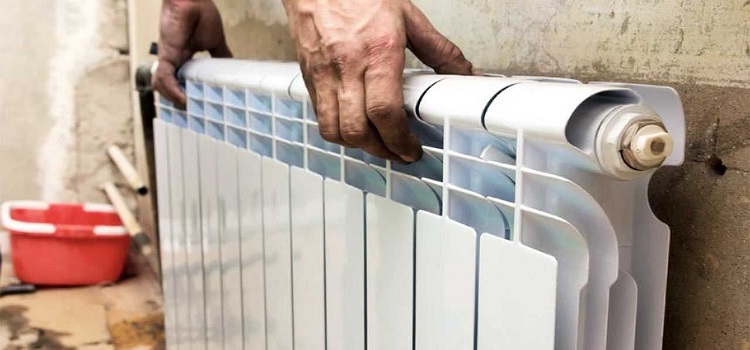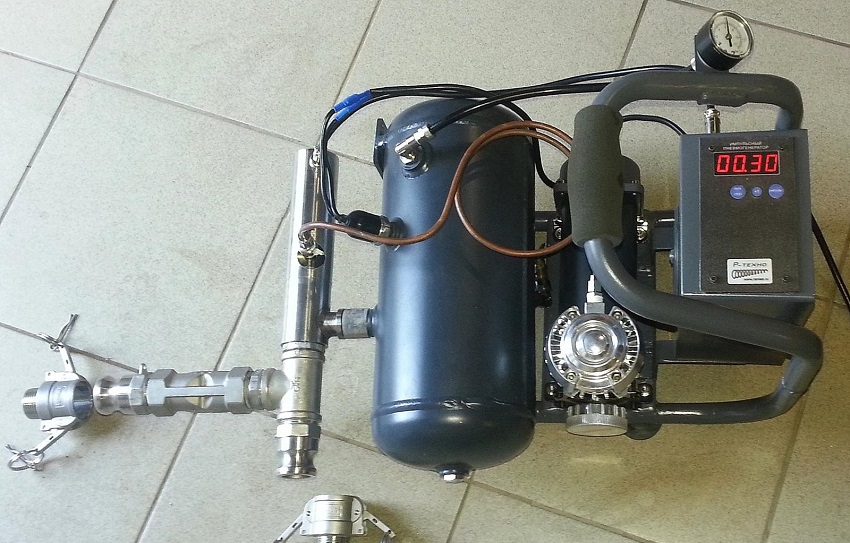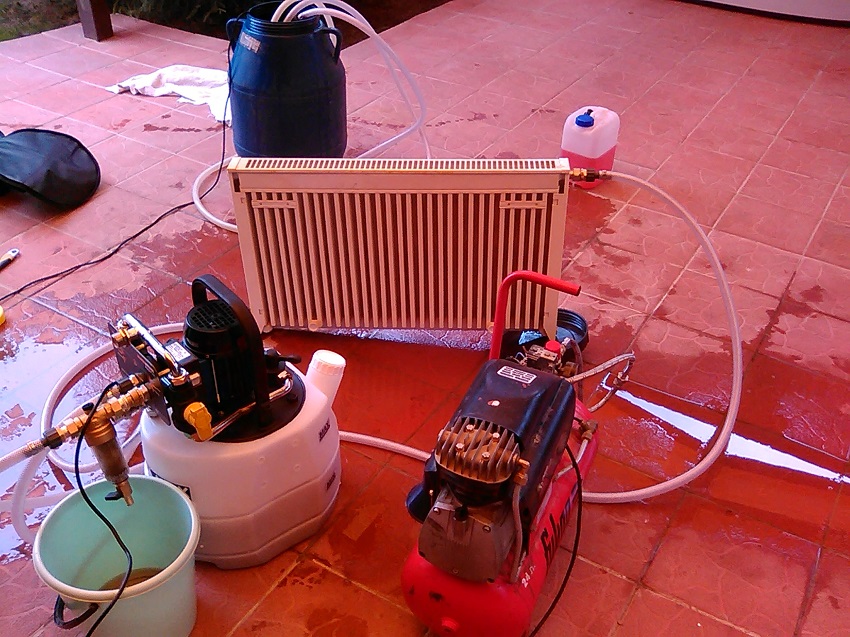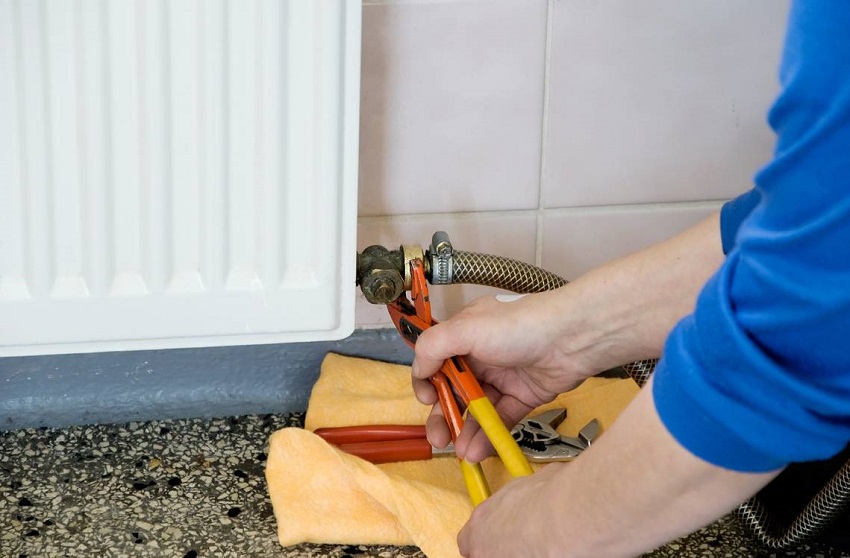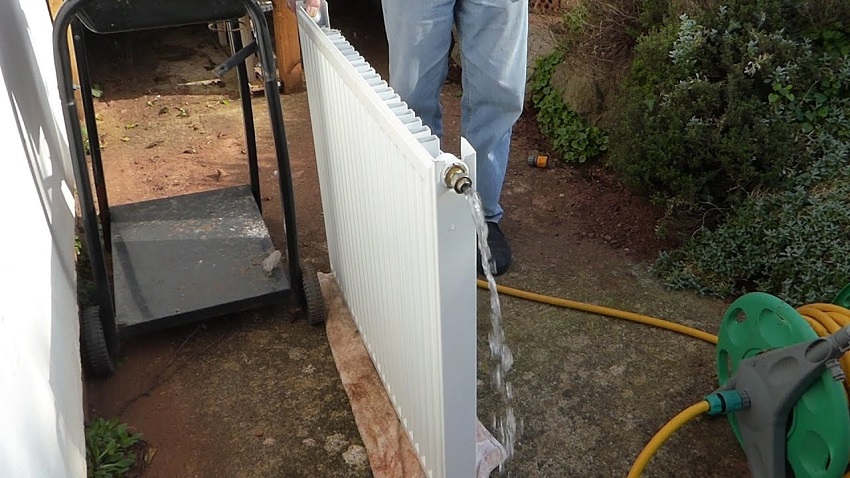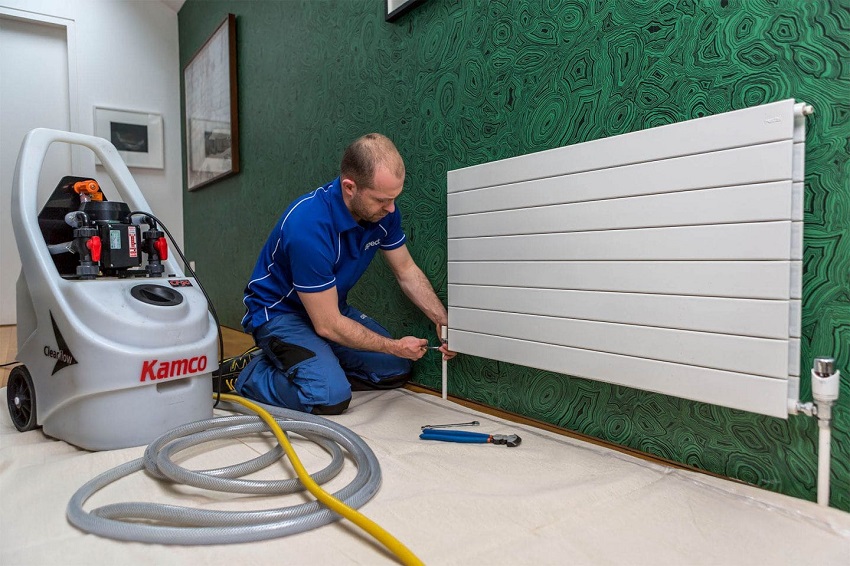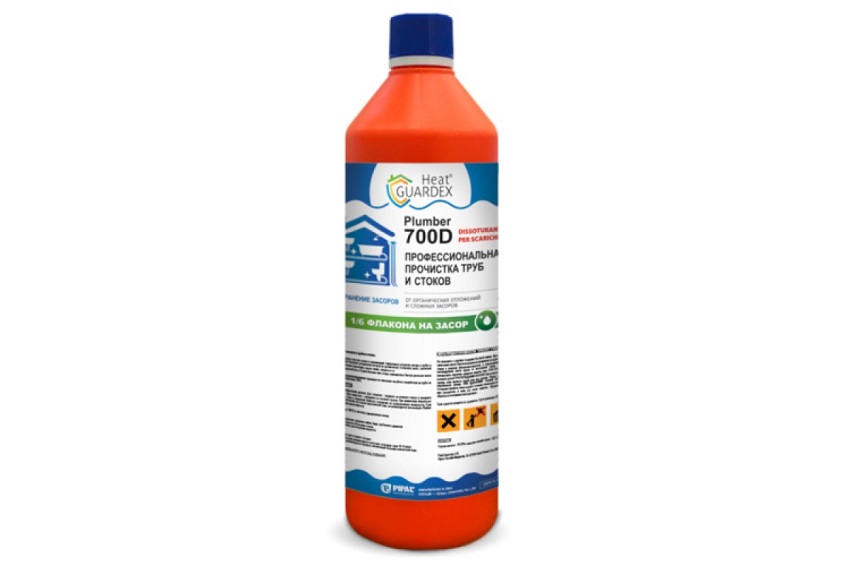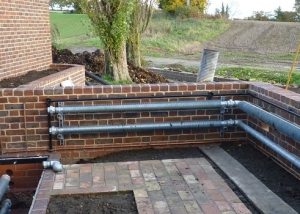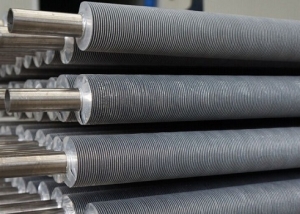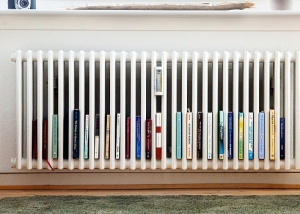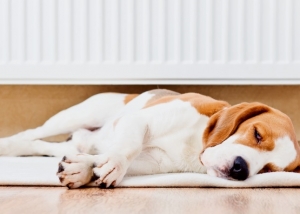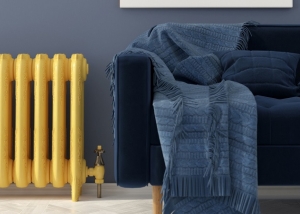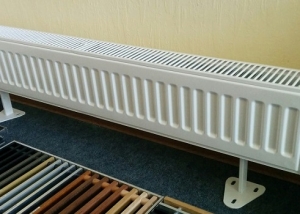If the heating system in the house is working properly, but the radiators in the rooms are still cold, this may mean that debris has accumulated in the battery sections. Small particles of dirt and rust impede the movement of the coolant and there is only one way out - washing the radiators. You can do such work on your own.
Content
Why battery rinsing is required
Properly installed heating equipment improves the radiator's efficiency (COP) and reduces the likelihood of clogging. However, the physical properties of warm water lead to the fact that the calcium dissolved in it gradually precipitates and forms deposits along the route of the coolant. Most often, iron cast-iron radiators and steel heating structures need to be flushed.
The pipes of the heating systems and the batteries themselves are made of different metals - steel and cast iron, aluminum and copper. But even provided that these containers inside these containers are coated with an anticorrosive composition, scale deposits are inevitable. The circulation of hot water leads to the formation of sediment and scale - the gap in the pipes and batteries inevitably narrows, making it difficult to transfer heat. Although it is written in the technical description for the heating equipment that the batteries are made of stainless steel, this does not exclude the appearance of dirt inside the circuit. A small percentage of the corrosion residue can still be detected when flushing the radiators and when cleaning the system.
In radiators, inevitably accumulate:
- rust;
- calcium (scale);
- organic suspension;
- chemical residues;
- another precipitate.
In addition, heating tanks are gradually being aired, especially in apartments on the upper floors. But there, for these purposes, Maevsky cranes are usually provided. In any circuit, regardless of whether it is a private house or a city apartment, after 3-5 years of operation, there is a need for air bleeding and battery cleaning.
What time is it better to clean the batteries
Cleaning the entire system in a house or apartment is the main way to increase the overall heating efficiency and the level of heat transfer of the batteries in each room. However, it is recommended that this be done not after starting hot water through pipes, but at the end of winter.
Note! Even with preventive cleaning, when pipes or a separate radiator are replaced, contamination is always detected with inclusion of clay, scale and rust elements.
We list a number of signs by which it is determined that the time has come to purge and clean the heating circuit:
- in neighboring apartments the batteries are much warmer;
- the main riser and outlet pipes are much warmer than radiators;
- after starting the system, the batteries warm up for a very long time (it takes several days);
- it is necessary to "flood" living rooms with other means;
- heating of the radiators is uneven - the top is airy and the bottom is clogged.
Feeling a clogged battery, it is easy to notice the difference - in different parts the temperature will be noticeably different.
Usually, specialists from specialized organizations with their equipment are invited to purge the system. It is not cheap. But part of the work or the entire cleaning can be done independently.
How to prepare for washing your own batteries
Even the simplest battery flushing scheme is a complex event that requires enough effort and free time. First, the remnants of the coolant are removed from their circuit - all water must be drained. It is recommended to coordinate this process with the specialists of the housing office, who are responsible for starting and draining the water with sealing the system.
Some people prefer to attract specialists to this undertaking, since heating system workers have the experience and equipment for such work - a special hydropneumatic compressor for purging. Such services are done in order of priority, which sometimes takes too long to wait. On the other hand, this washing is not as difficult as it seems. If there is experience in replacing and installing pipes, cleaning the system will not seem difficult. It is also advisable to notify the neighbors about the upcoming event, it may be easier and cheaper to do it together.
The principle of flushing the heating circuit in a private house is about the same as when flushing the batteries in the apartment. At the same time, the technique is not significantly different for cast iron, aluminum or bimetallic radiators. They will have to be disconnected from the heating pipes.
Helpful advice! Old cast-iron "accordions" that did not know the cleaning for the entire time of their existence, it is better to remove from the holders and take out for washing into the yard.
Lightweight modern radiators can be washed in the bathroom with a burlap to protect the enameled or sanded surface. Protect the drain hole from clogging with a mesh for large particles.
If the manipulations are carried out in the room, it is recommended to remove furniture and all interior items that can be dirty with dirty sediment in advance. Under the battery collectors, where the plugs will be removed and the fittings for connecting the pipes are unscrewed, lay an oilcloth with rags. You can substitute a flat container for collecting liquid dirt from pipes, if plugs are not installed.
Cleaning can be done with chemistry (much more effective for descaling) or mechanically. Rinse each battery several times, until clear water, to ensure that the containers are completely clean.
How to clean and flush heating radiators
The essence of mechanical purging with a hydropneumatic compressor is that the repeated start of water with air bubbles under pressure carries with it a dirty sediment. This is how specialists work. But renting such equipment and working with it without experience is somewhat problematic. In addition, old batteries with clamps attached after leaks can be destroyed even more. But this is the most effective way to purge cast-iron "accordions" that does not require dismantling from the wall. The main advantage of the method is that it is possible to flush the entire system at once, and not just one battery.
Cleaning with chemicals at home is another way to restore the radiator's ability to maximize heat transfer. The method is based on the use of alkalis and acids. They effectively fight sedimentary siltation and calcium scale, which has absorbed rust and other impurities.
First, the disconnected radiator is freed from dirt mechanically. Brush, spatula or hook from the wire rake dirty sediment from the holes. Next, the first fill is made, while the chemistry is not used until the water is relatively clean. It is recommended that you tap and shake the battery to separate the contents.
Chemical flushing of batteries
Wash with chemical solutions is used to destroy scale. Hurry is not recommended; it is better to fill the radiator for 1-2 hours with water and a reagent, which will gradually do its job.
Important! Chemical reagents dissolve in water in different ways. Try to dissolve 1-2 granules or a few drops in a large container to track the reaction. This is necessary so as not to get burns from the reaction during a sharp pouring of liquid into a battery with water.
Will be effective:
- liquid for cleaning the car radiator;
- milk serum;
- hot citric acid solution;
- caustic soda;
- Cillit-HS reagents;
- vinegar essence;
- solutions for cleaning sewer pipes;
- special reagents for washing heating systems.
For beginners, the question often arises - how much reagent is needed to flush the batteries? The solution must be capable of "chemical attack" of internal deposits. For example, for 1 radiator use 1 bottle of 70% vinegar essence or 1 pack of caustic soda. If this is “Mole” or special means for cleaning the sewer - read the instructions, but not less than 1-2 bags of granular funds. After some time, carefully knock the radiator with a wooden or rubber mallet. Then shake the radiator tank and carefully drain the solution so as not to drench your hands.
Do not forget about safety rules - when working with “chemistry” you need to protect your eyes and respiratory organs from chemical fumes, as well as protect your hands with rubber gloves from droplets of solution on the skin. Next, rinse the battery 2-3 times with water until it is clean - full flushing guarantee. As you can see, nothing complicated if you take all the precautions. After this, we put the batteries in place and tightly connect them to the pipes. It is advisable to provide the system with new filters.
